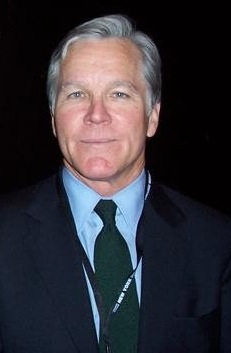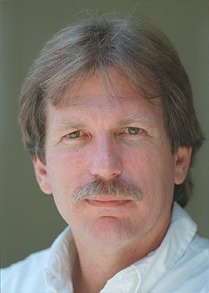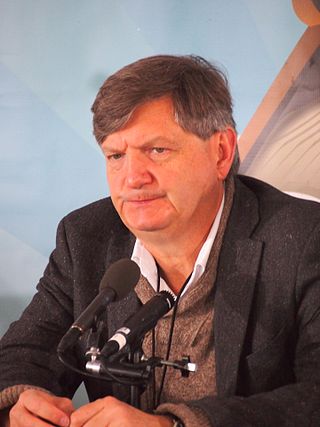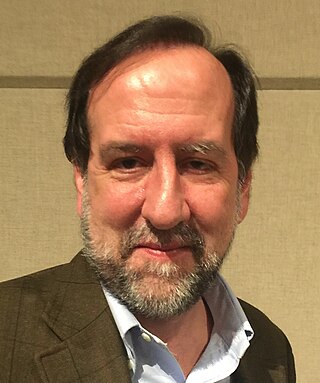
The Pulitzer Prize is an award administered by Columbia University for achievements in newspaper, magazine, online journalism, literature, and musical composition in the United States. It was established in 1917 by provisions in the will of Joseph Pulitzer, who had made his fortune as a newspaper publisher.
In computing, the utility diff is a data comparison tool that computes and displays the differences between the contents of files. Unlike edit distance notions used for other purposes, diff is line-oriented rather than character-oriented, but it is like Levenshtein distance in that it tries to determine the smallest set of deletions and insertions to create one file from the other. The utility displays the changes in one of several standard formats, such that both humans or computers can parse the changes, and use them for patching.

Apache Subversion is a software versioning and revision control system distributed as open source under the Apache License. Software developers use Subversion to maintain current and historical versions of files such as source code, web pages, and documentation. Its goal is to be a mostly compatible successor to the widely used Concurrent Versions System (CVS).

Jennifer 8. Lee is an American journalist who previously worked for The New York Times. She is the co-founder and president of the literary studio Plympton and a producer of The Search for General Tso, which premiered at the 2014 Tribeca Film Festival.

Bill Keller is an American journalist. He was the founding editor-in-chief of The Marshall Project, a nonprofit that reports on criminal justice in the United States. Previously, he was a columnist for The New York Times, and served as the paper's executive editor from July 2003 until September 2011. On June 2, 2011, he announced that he would step down from the position to become a full-time writer. Jill Abramson replaced him as executive editor.

Gary Stephen Webb was an American investigative journalist.

Wikinews is a free-content news wiki and a project of the Wikimedia Foundation that works through collaborative journalism. Wikipedia co-founder Jimmy Wales has distinguished Wikinews from Wikipedia by saying, "On Wikinews, each story is to be written as a news story as opposed to an encyclopedia article." Wikinews's neutral point of view policy aims to distinguish it from other citizen journalism efforts such as Indymedia and OhmyNews. In contrast to most Wikimedia Foundation projects, Wikinews allows original work in the form of original reporting and interviews. In contrast to newspapers, Wikinews does not permit op-ed.

Jane Meredith Mayer is an American investigative journalist who has been a staff writer for The New Yorker since 1995. She has written for the publication about money in politics; government prosecution of whistleblowers; the United States Predator drone program; Donald Trump's ghostwriter, Tony Schwartz; and Trump's financial backer, Robert Mercer. In 2016, Mayer's book Dark Money—in which she investigated the history of the conservative fundraising Koch brothers—was published to critical acclaim.

Kurt Alexander Eichenwald is an American journalist and a New York Times bestselling author of five books, one of which, The Informant (2000), was made into a motion picture in 2009. He is senior investigative editor at The Conversation. Formerly he was a senior writer and investigative reporter with The New York Times, Condé Nast's business magazine, Portfolio, and later was a contributing editor with Vanity Fair and a senior writer with Newsweek. Eichenwald had been employed by The New York Times since 1986 and primarily covered Wall Street and corporate topics such as insider trading, accounting scandals, and takeovers, but also wrote about a range of issues including terrorism, the Bill Clinton pardon controversy, federal health care policy, and sexual predators on the Internet.

Science journalism conveys reporting about science to the public. The field typically involves interactions between scientists, journalists and the public.

James Risen is an American journalist for The Intercept. He previously worked for The New York Times and before that for Los Angeles Times. He has written or co-written many articles concerning U.S. government activities and is the author or co-author of two books about the Central Intelligence Agency (CIA) and a book about the American public debate about abortion. Risen is a Pulitzer Prize winner.
Richard Price is an American novelist and screenwriter, known for the books The Wanderers (1974), Clockers (1992) and Lush Life (2008). Price's novels explore late-20th-century urban America in a gritty, realistic manner that has brought him considerable literary acclaim. Several of his novels are set in a fictional northern New Jersey city called Dempsy.

A paywall is a method of restricting access to content, with a purchase or a paid subscription, especially news. Beginning in the mid-2010s, newspapers started implementing paywalls on their websites as a way to increase revenue after years of decline in paid print readership and advertising revenue, partly due to the use of ad blockers. In academics, research papers are often subject to a paywall and are available via academic libraries that subscribe.
The Jargon File is a glossary and usage dictionary of slang used by computer programmers. The original Jargon File was a collection of terms from technical cultures such as the MIT AI Lab, the Stanford AI Lab (SAIL) and others of the old ARPANET AI/LISP/PDP-10 communities, including Bolt, Beranek and Newman, Carnegie Mellon University, and Worcester Polytechnic Institute. It was published in paperback form in 1983 as The Hacker's Dictionary, revised in 1991 as The New Hacker's Dictionary.
The Finkbeiner test, named for the science journalist Ann Finkbeiner, is a checklist to help science journalists avoid gender bias in articles about women in science. It asks writers to avoid describing women scientists in terms of stereotypically feminine traits, such as their family arrangements.

Faye Flam is an American journalist. She has written for Science Magazine and wrote two weekly columns for The Philadelphia Inquirer, including one on sex and one on evolution. Flam wrote a book on the influence of sex on human evolution and society. She teaches science writing and lectures on communication to scientific forums, and is a journalism critic for the MIT Knight Science Journalism Tracker.

Sarah Maslin Nir is an American journalist, best known for her New York Times report on the working conditions of nail salon workers, for which she was a finalist for the 2016 Pulitzer Prize for Local Reporting. The story generated both extensive regulatory changes and extensive criticism.

Charles Aaron is an American music journalist and editor, formerly for Spin magazine, where he worked for 23 years.

Thomas Vinciguerra was an American journalist, editor, and author. A founding editor of The Week magazine, he published about popular culture, nostalgia and other subjects in The New York Times, The Wall Street Journal, The New Yorker and GQ.

Parable of the Polygons is a 2014 explorable explanation created by Vi Hart and Nicky Case. The article focuses on a society of blue squares and yellow triangles which have slight personal biases against diversity, which leads to social segregation. It is based on game theorist Thomas Schelling's papers about residential segregation. The article was well-received, especially its visual and playable aspects, and was called a useful educational tool for topics like racial segregation.
















